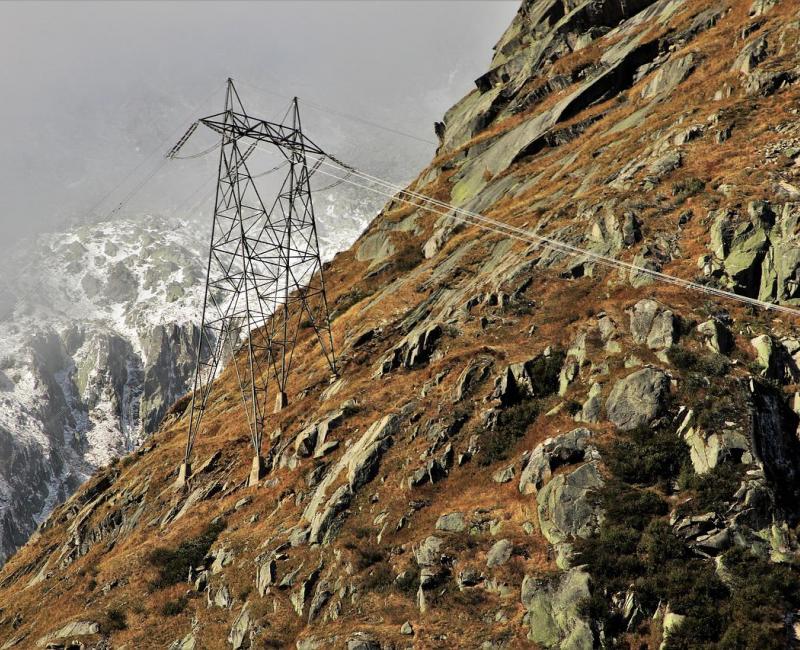3 SAP
3 SAP
Documentation on the approval process of this methodology
03 SAP - Approved
03 SAP - Approved
The latest approved single allocation platform methodology
19 RDCT Cost Sharing
19 RDCT Cost Sharing
Documentation on the approval processes of the RDCT cost sharing methodologies of each capacity calculation region
ACER appreciates ENTSO-E`s efforts to expand its seasonal assessments

ACER appreciates ENTSO-E`s efforts to expand its seasonal assessments
What is it about?
ENTSO-E’s Summer and Winter Outlooks alert Member States and Transmission System Operators (TSOs) about potential risks related to security of electricity supply that could occur six months ahead.
The importance of these reports is heightened in the context of Russia’s continued military aggression against Ukraine.
ACER acknowledges ENTSO-E’s efforts to take account of the changing wartime situation as reflected in the recent Summer Outlook. ACER also provides some considerations for ENTSO-E’s upcoming Winter Outlook report.
Highlights of ENTSO-E’s Summer Outlook (2022)
ENTSO-E’s Summer Outlook Report 2022 (June 2022) found no major summer-time risk to electricity supply in Europe. However, it pointed to the need for close monitoring of electricity and gas sectors and enhanced coordination for the winter period.
ENTSO-E’s assessment is that gas savings made by the power sector are possible, but that a significant volume of gas is still needed for electricity adequacy. ACER welcomes ENTSO-E’s preliminary assessment of gas dependency, which provides an early indication of potential risks to security of supply for the upcoming winter.
ACER decided not to issue an opinion on ENTSO-E’s Summer Outlook, finding it broadly consistent with its mandate.
ACER’s considerations for the upcoming Winter Outlook Report
ACER raised some key considerations on the upcoming Winter Outlook Report 2022-2023:
- Coordination between ENTSOs is key
Gas storage levels at the end of summer will be key for the Winter electricity Adequacy Outlook. ACER recommends that ENTSO-E (electricity) and ENTSOG (gas) coordinate the assumptions and outputs for their respective seasonal outlooks for consistent results.
- National mitigation measures will have an impact at European level
Member States are implementing preparedness and mitigation measures in view of a potential disruption of Russian gas. The Winter Outlook can assess the relevant cross-border effects of these national mitigation measures. TSOs should closely coordinate with competent national authorities to ensure the latest data is available to ENTSO-E.
- Considering additional sensitivities can help EU decision makers
ACER appreciates ENTSO-E’s efforts to shape the Winter Outlook in a way that EU decision-makers can benefit from additional sensitivity analysis to capture potential scenarios.
ACER proposes further scenarios for consideration related to demand side adjustment, supply side events and factors affecting the network.
- ENTSO-E’s dynamic and responsive approach is welcome
ACER appreciates ENTSO-E is engaging with and sharing early results with Member States and national regulatory authorities.
ACER welcomes ENTSO-E inclusion of the months of October and November (which are not usually part of the Outlooks) and recommends updating the assumptions of the Winter Outlook as close as possible to the publication date.
19 RDCT Cost Sharing - Approved
19 RDCT Cost Sharing - Approved
The latest approved RDCT cost sharing methodologies of the respective capacity calculation region
ACER has decided on alternative electricity bidding zone configurations

ACER has decided on alternative electricity bidding zone configurations
What is it about?
The EU Agency for the Cooperation of Energy Regulators (ACER) has reached a decision on alternative electricity bidding zone configurations. Transmission System Operators (TSOs) have 12 months to conduct the bidding zone review and to recommend whether to keep or amend the existing bidding zones.
What are bidding zones and why are their alternative configurations relevant?
A bidding zone is the largest geographical area within which market participants are able to exchange energy without capacity allocation. Currently, bidding zones in Europe are mostly defined by national borders. However, the existing European electricity target model requires defining bidding zones based on network congestions. Hence, alternative bidding zone configurations based on this principle need to be examined.
What are the Decision’s main highlights?
ACER’s Decision is based on stakeholder input (via a stakeholder consultation in 2021), as well as on the extensive information provided by TSOs. This information included alternative configurations previously submitted to ACER, the outcome of locational marginal pricing simulations (in accordance with the bidding zone review methodology approved in November 2020) and additional feedback received by TSOs.
In its Decision, ACER proposes alternative bidding zone configurations for five Member States.
- In Continental Europe, alternative configurations are proposed for Germany (4 alternatives), France (1), Italy (1) and the Netherlands (1).
- In the Nordic area, 4 alternative configurations are proposed for Sweden.
What’s next?
Following ACER’s Decision, TSOs have 12 months to conduct the bidding zone review and provide a recommendation on whether to keep or amend the existing bidding zones. Member States will then decide whether or not to change the bidding zones accordingly.
What are the benefits?
Better defined bidding zone configurations (i.e. whose borders are based on long-term, structural congestions) can bring several benefits including:
- increased opportunities for cross-zonal trade,
- more efficient network investments, and
- cost-efficient integration of new technologies.
Read more on the ACER's Decision 11-2022.
ACER publishes the first Implementation Monitoring Report on the System Operation Guideline

ACER publishes the first Implementation Monitoring Report on the System Operation Guideline
What is the report about?
The EU Agency for the Cooperation of Energy Regulators (ACER) publishes today the first Implementation Monitoring Report on the progresses made in implementing the EU-wide guideline on electricity transmission system operation (the System Operation Guideline).
The System Operation Guideline provides the rules and responsibilities for the coordination and data exchange between transmission system operators (TSOs), between TSOs and distribution system operators (DSOs), as well as between TSOs or DSOs and significant grid users (SGUs) in planning and in close to real-time operations.
In particular, the report analyses the implementation status of the following areas:
-
applicability and scope of the data exchange,
-
approval of the key organisation requirements, roles and responsibilities (KORRR) and the implementation of specific aspects of the data exchange,
-
agreements on processes and format for data exchanges between TSOs and relevant DSOs,
-
provision of data between TSOs, DSOs and SGUs.
What are the key findings?
ACER’s report shows an incomplete and insufficiently uniform implementation of the data exchange provisions of the System Operation Guideline across the European Union:
-
In 70% of the Member States, the provisions on the applicability and scope of the data exchange are either fully or partially implemented.
-
The majority of national regulatory authorities (NRAs) reported implementing or approving the KORRR in relation to data exchange. 60% of NRAs confirmed their respective TSOs and DSOs reached agreements on effective, efficient and proportional processes regarding data exchanges and the data exchange format.
-
NRAs reported a wide range of parameters and thresholds when specifying the responsibilities of the SGUs required for exchanging data. ACER questions whether these differences limit a level playing field and recommends proportionate changes to the rules.
-
Rules on the provision of data between TSOs, DSOs and SGUs are specified in most Member States. The implementation of the data exchange schemes is deemed outstanding in over 35% of countries. Furthermore, the implementation of the DSOs' obligation to provide data on generating capacity of the small generating modules (type A PGMs) is not satisfactory.
The report acknowledges that TSOs’ obligations have mostly been implemented. The highest implementation levels were reported for:
-
the refresh rate for real-time data
-
the review of structural data shared with other TSOs
-
the exchange of real-time data between TSOs.
Some specific KORRR obligations, however, remain outstanding.
ACER’s key recommendations:
ACER recommends NRAs to perform or promote a prompt implementation of the relevant provisions of the System Operation Guideline in their countries.
Where TSOs have not yet developed specific proposals subject to approval (i.e. on the applicability and scope of data exchange) or have not yet implemented relevant provisions, ACER encourages NRAs to monitor the process or liaise with TSOs to define a detailed roadmap towards the implementation of the System Operation Guideline.
ACER also suggests considering further changes to the data exchange rules aiming at efficient harmonisation of applicable criteria for SGUs definition.
ACER approves the extension of the application of Forward Capacity Allocation methodologies to Fingrid

ACER approves the extension of the application of Forward Capacity Allocation methodologies to Fingrid
What is it about?
The EU Agency for the Cooperation of Energy Regulators (ACER) has decided on the Transmission System Operators (TSOs)’ proposal to amend the Forward Capacity Allocation methodologies related to:
- the establishment of a Single Allocation Platform and the requirements for sharing the costs of its establishment and operation,
- the Congestion Income Distribution.
The approved amendments extend the application of those methodologies to Fingrid (the Finnish TSO).
What are the benefits?
The amended methodologies will enable the issuing of long-term transmission rights on the Finnish – Estonian bidding zone borders and therefore provide the long-term cross-zonal hedging opportunities needed by the Baltic market participants.
To accelerate the availability of the long-term transmission rights on the Finnish-Estonian border, ACER promptly approved the amendments to the methodologies, issuing the Decisions more than three months ahead of the legal deadline.
Access ACER Decision 09-2022 on amendments to Single Allocation Platform (SAP) and ACER Decision 10-2022 on amendments to Congestion Income Distribution Methodology (CIDM).
ACER grants an extension for regulators to decide on the minimum activation period of frequency containment reserves (FCR) providers

ACER grants an extension for regulators to decide on the minimum activation period of frequency containment reserves (FCR) providers
What is it about?
The EU Agency for the Cooperation of Energy Regulators (ACER) adopted a decision granting National Regulatory Authorities (NRAs) of the Continental Europe Synchronous Area (CE SA) an extension of six months to decide on the minimum activation period of frequency containment reserves (FCR) providers.
The adoption of this decision followed the joint request from the NRAs, which was submitted to ACER in May 2022. NRAs have now until 3 December 2022 to agree on the Transmission System Operators' (TSOs) proposal regarding the minimum activation period to be ensured by those FCR providers having units or groups with limited energy reservoirs to remain available during alert state.
What do frequency containment reserves (FCR) mean?
FCR (also known as primary control reserves) help maintain the power balance across the EU electricity grid. FCR are one of the balancing services to level out frequency deviations in the power grid. The FCR is the first response to frequency disturbances (e.g. following a planned/unplanned power plant outage). The minimum activation period must be ensured by the FCR providers. If the frequency deviation persists, the Frequency Restoration Reserves (FRR) subsequently replace the primary control reserve.